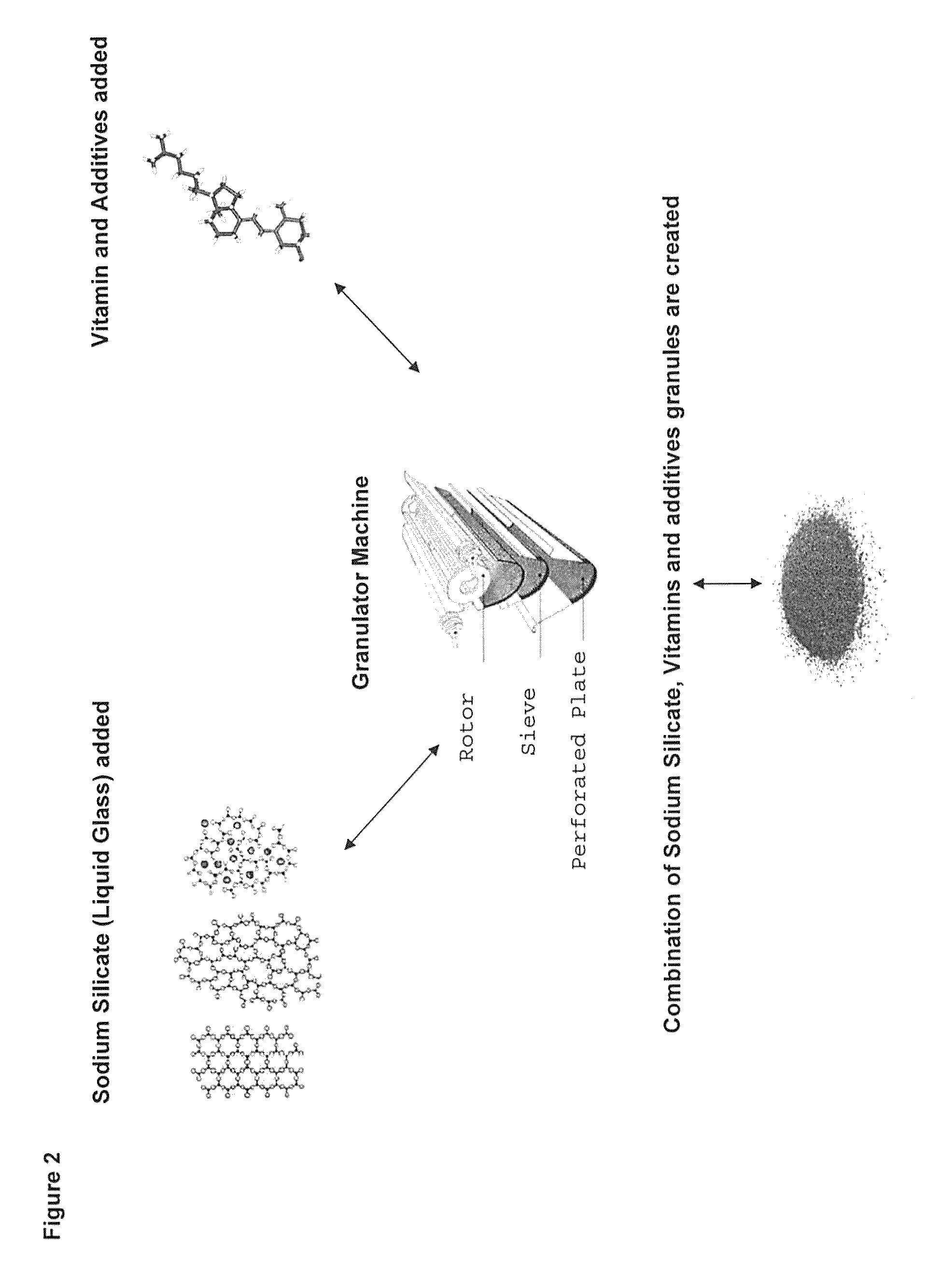Mineral paper
a technology of mineral paper and paper, applied in the field of mineral paper, can solve the problems that none of them seems to have achieved widespread use and adoption
- Summary
- Abstract
- Description
- Claims
- Application Information
AI Technical Summary
Benefits of technology
Problems solved by technology
Method used
Image
Examples
example 1
Single-Layered Environmentally-Friendly Paper
[0059]A single-layered environmentally-friendly paper is produced from a combination of 50% by weight of rock, 45% by weight of Sodium Silicate Solution, and 5% by weight of additives. This is subjected to mixing, extruding, and milling. The result is granules. These granules are fed into the extruder, and single-layered papers each having a thickness of 31 μm and 52 μm are produced.
example 2
Single-layered Environmentally-Friendly Paper
[0060]A single-layered paper is produced from a combination of 60% by weight of rock, 35% by weight of Sodium Silicate solution and 5% by weight of additives. After mixing, extruding, and milling, granules are created. The granules are fed into the extruder, and single-layered papers each having a thickness of 73 μm and 82 μm are produced.
example 3
Single-Layered Paper
[0061]A single-layered paper is produced from a combination of 70% by weight of rock, 25% by weight of Sodium Silicate solution, and 5% by weight of additives. The above combination is subjected to the steps of mixing, extruding, and milling, resulting in granulates. The granules are fed into the extruder and single-layered environmentally friendly papers each having a thickness of 102 μm and 116 μm are produced.
PUM
| Property | Measurement | Unit |
|---|---|---|
| diameter | aaaaa | aaaaa |
| thickness | aaaaa | aaaaa |
| particle size | aaaaa | aaaaa |
Abstract
Description
Claims
Application Information
 Login to View More
Login to View More - R&D
- Intellectual Property
- Life Sciences
- Materials
- Tech Scout
- Unparalleled Data Quality
- Higher Quality Content
- 60% Fewer Hallucinations
Browse by: Latest US Patents, China's latest patents, Technical Efficacy Thesaurus, Application Domain, Technology Topic, Popular Technical Reports.
© 2025 PatSnap. All rights reserved.Legal|Privacy policy|Modern Slavery Act Transparency Statement|Sitemap|About US| Contact US: help@patsnap.com



